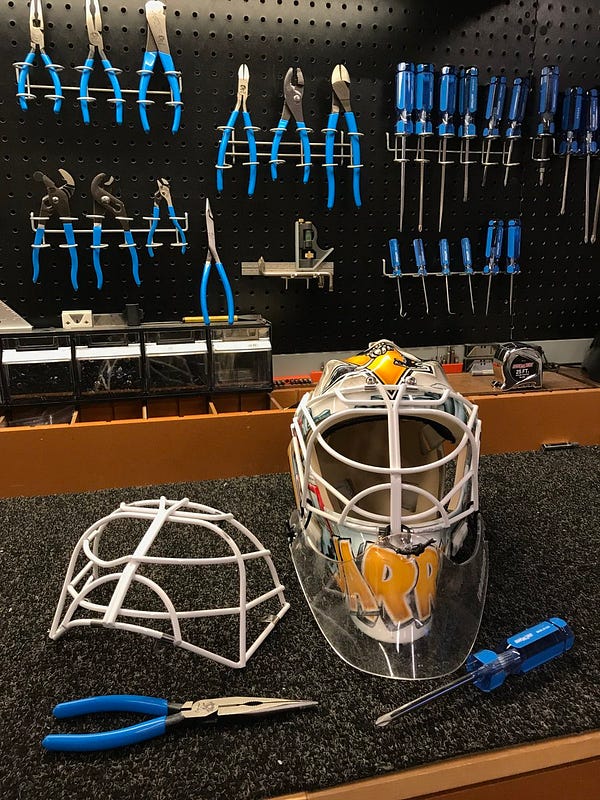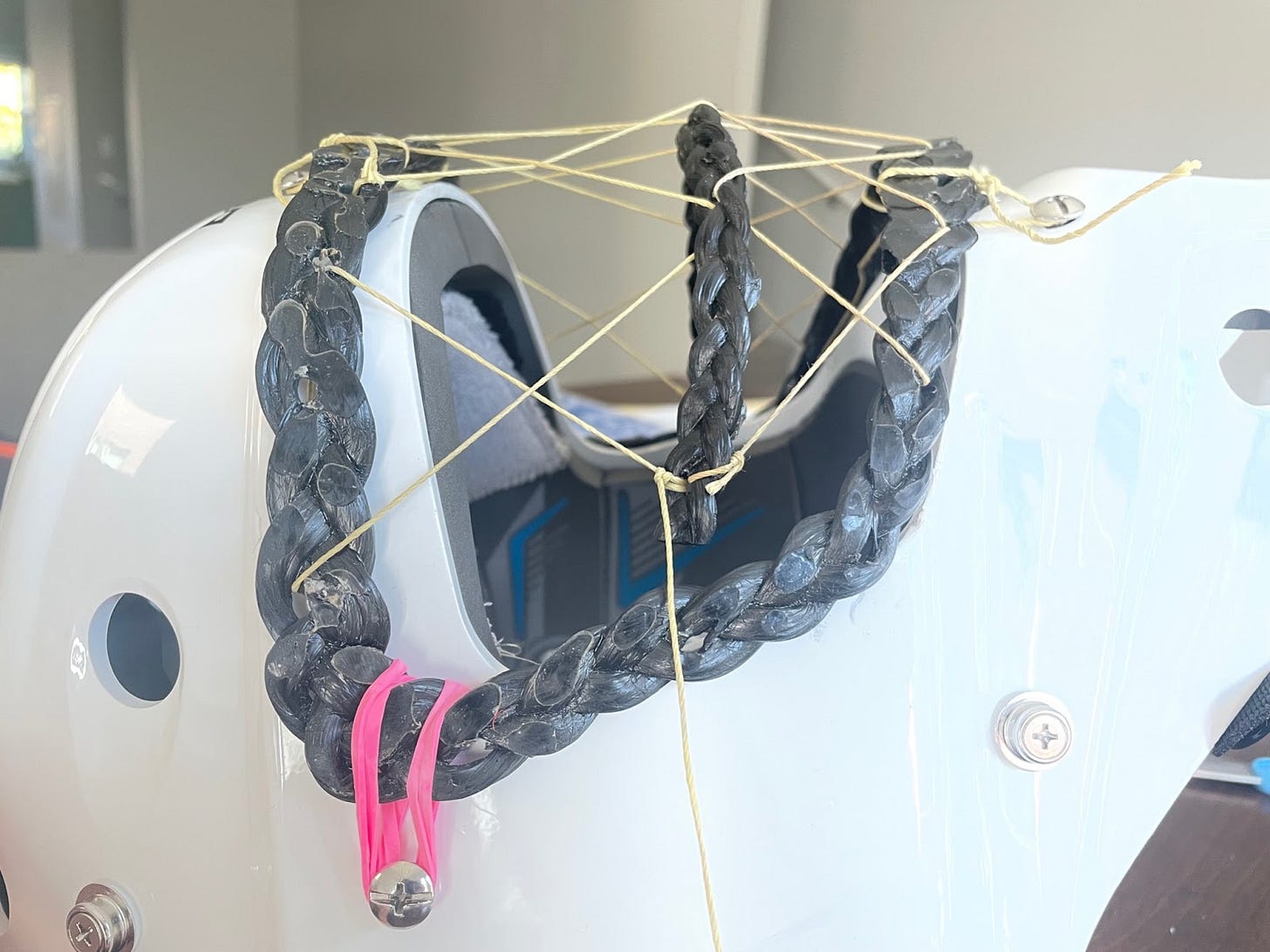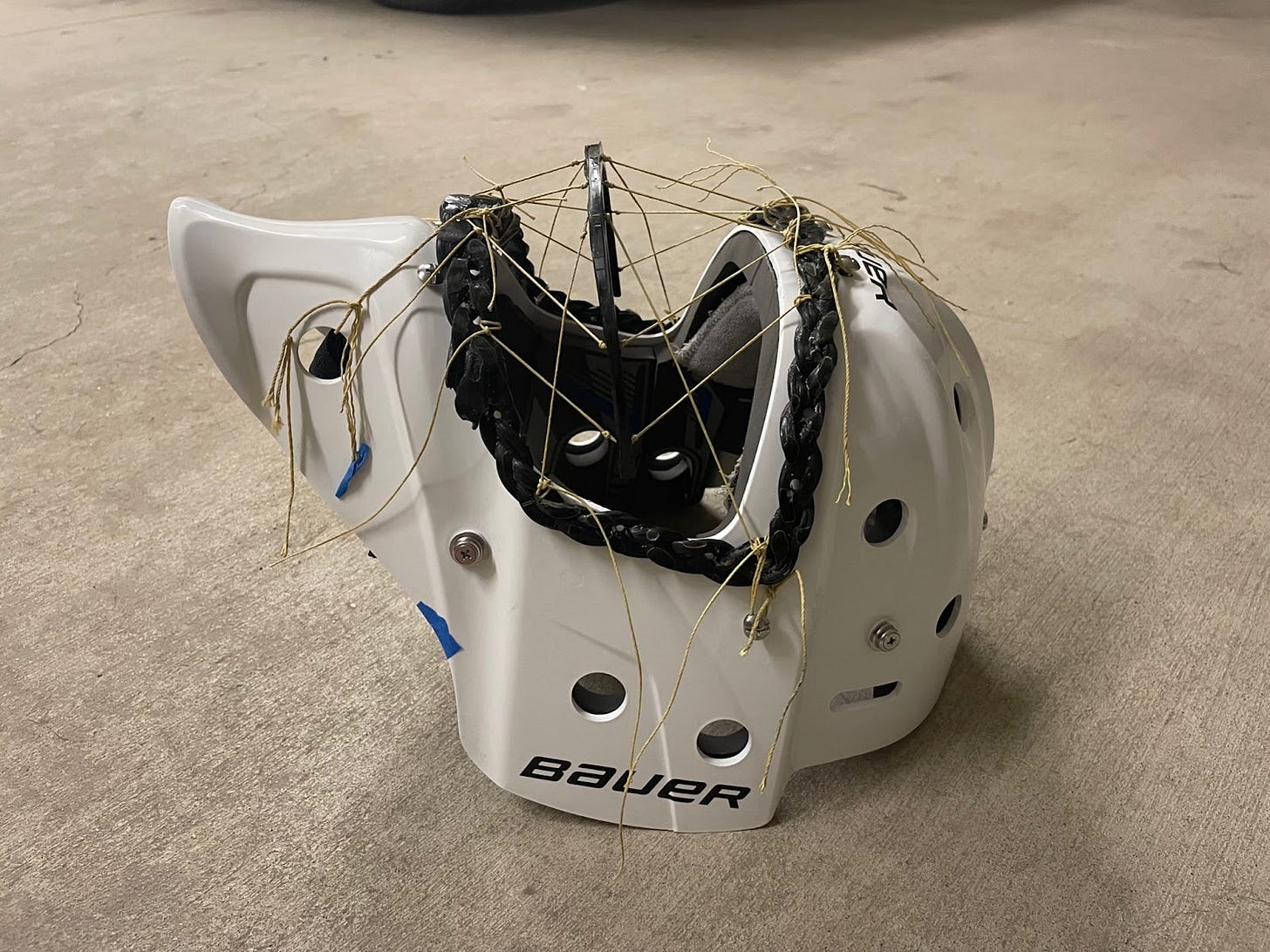An Inventor’s Quest for the NHL Pt. 6
Customer-Driven Development
This series follows my attempt to develop a product that I dream of getting into the NHL. Previously on the Quest: Part 1, Part 2, Part 3, Part 4, Part 5
I’m definitely not building a startup, but I see the value in customer-driven development. Instead of retreating to a garage to build a product in isolation, you’re supposed to continually test ideas along the way with potential customers.
Personally, I’d rather tinker in peace and emerge with something so brilliant that people fling money at me as soon as they lay eyes on it. But unfortunately, that’s not the way it goes. We always have blindspots when it comes to our own creations.
So, I started talking to goalies pretty early on in my prototyping process. I wanted to answer two main questions. First, is visibility actually a problem for goalies? And second, would goalies buy my particular solution to the visibility problem?
Cold contacting people is pretty uncomfortable. In fact, I struggle with the whole sales/marketing side of things as a whole. As a consumer, I’m pretty sick of ads seeping into anything and everything. At the same time, I want to sell my product. I don’t exactly know how I’ll balance that down the road, but in this initial phase, I decided to reach out to people with a short message that went something like, “Hey, I’m a mechanical engineer working on a cage with better visibility. Would love to get your thoughts.” That felt pretty honest and to the point. If they didn’t respond, I’d let them be.
At first, I set out to talk to college goalies. College emails are usually pretty formulaic, so I thought I’d be able to cold contact goalies after getting their names from the team websites. That didn’t work. Most of the emails bounced back or went unanswered.
Plan B was Twitter (follow me!). I reached out to 59 total goalies and ended up hearing back from 25 of them (39%). That number itself seemed to answer my first question -- whether or not goalies were interested in better visibility -- with a yes. It’s hard to judge just by number of responses, but my sense is that’s pretty good. I’ve tried something similar before with a different idea and only gotten a 5-10% response rate.
But more convincing than that were the conversations I had with goalies who were generous enough to chat with me on Zoom. From their enthusiasm, I could feel that I was at least working on the right problem.
On top of that, I learned of another problem with the current cages that I had no idea about. They bend. A lot! Apparently, at a D1 level, a goalie will go through five cages a season. I had no idea.


So if my cage could last longer, that would give goalies another reason to switch. (Of course, unlike metallic cages, my fiber-based cage won’t have a gradual, yielding failure, so I’ll have to make sure that it’s well above and beyond the point of failure that they have.)
But how did the goalies respond to my prototype cage specifically? Overall very positively. They were excited to see a really radical new idea for a cage. However, most of them weren’t convinced that such a thin cage could be strong enough. In a way, I took that reaction as a good thing.
There were no questions like “how is this going to make me a better goaltender?”. Their concerns were about safety and not about performance. I can objectively prove safety through testing, but performance is subjective, based on the goalie’s opinion on the importance of visibility. That would’ve been a much more difficult thing to prove, but thankfully they could see the benefit right away.
The other common feedback I got was that the cage was not great aesthetically. The two-tone look with the black carbon fiber frame and the yellow Kevlar thread was not very popular -- understandably.
But they also didn’t like the braided frame. If you’ve read Part 4, you’ll know I was pretty excited about it from an engineering standpoint. It’s like being told your baby is ugly! What do you do?
In my case, I threw it out.
But that’s ok because that’s the whole point of talking to goalies this early. I wanted to remove any potential roadblocks from it being embraced by the goalie community -- even if that meant letting go of a fun idea.
Thanks for reading.
Surjan



